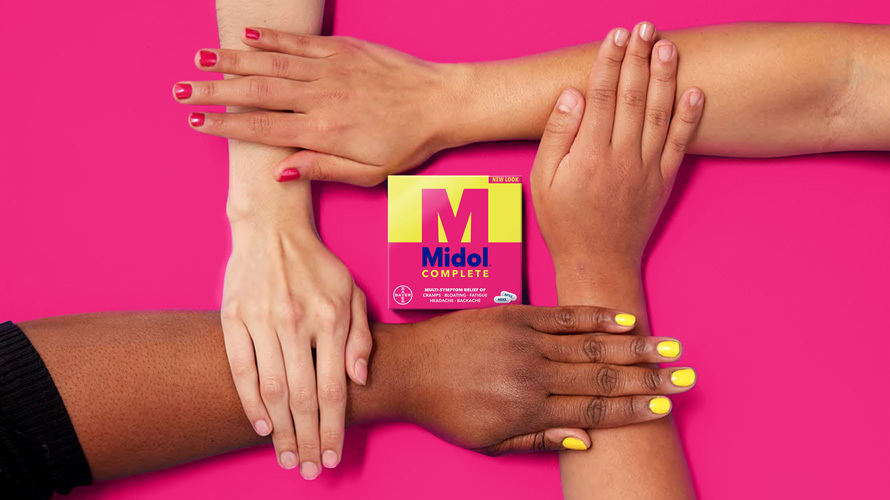Midol is a widely recognized over-the-counter medication primarily used to alleviate symptoms associated with menstruation, such as cramps, bloating, and headaches. It’s a go-to remedy for many individuals seeking relief from menstrual discomfort. However, while it’s commonly used, there might still be some uncertainties about its effectiveness, safety, and proper usage. In this comprehensive guide, we’ll delve into the details of Midol, exploring its ingredients, how it works, its benefits, potential side effects, and other essential information to help you make informed decisions about its usage.
Understanding Midol
Midol is a brand name for a range of over-the-counter medications designed to relieve symptoms of premenstrual syndrome (PMS) and menstrual discomfort. It typically contains a combination of active ingredients such as acetaminophen (a pain reliever), caffeine (a stimulant), and an antihistamine like pyrilamine maleate or an NSAID (nonsteroidal anti-inflammatory drug) like ibuprofen or naproxen. The combination of these ingredients targets multiple symptoms simultaneously, providing comprehensive relief for menstrual discomfort.
Uses and Benefits of Midol
Pain Relief: Acetaminophen, ibuprofen, and naproxen, the primary pain-relieving ingredients in Midol, work by inhibiting the production of prostaglandins, hormone-like substances that play a key role in the menstrual process and can cause pain and inflammation.
Reduction of Menstrual Cramps: Menstrual cramps, medically known as dysmenorrhea, are caused by the contractions of the uterine muscles during menstruation. The antispasmodic properties of ingredients like ibuprofen and naproxen help to relax these muscles, thereby reducing the intensity of cramps and associated discomfort.
Management of Bloating: Bloating is a common symptom experienced by many individuals during menstruation due to hormonal fluctuations. Caffeine, present in Midol, acts as a diuretic, helping to reduce water retention and alleviate bloating.
Alleviation of Headaches: Headaches or migraines often accompany menstruation, and the analgesic properties of acetaminophen, ibuprofen, and naproxen can provide relief from such discomfort.
Improvement of Mood: Some Mido’l formulations include ingredients like pyrilamine maleate, which is an antihistamine with mild sedative effects. This can help in managing mood swings and irritability associated with PMS.
Convenience and Accessibility: Midol is available over the counter in most pharmacies and grocery stores, making it easily accessible for individuals seeking relief from menstrual symptoms without the need for a prescription.
Potential Side Effects of Midol
While Midol is generally safe for most people when used as directed, it may cause side effects in some individuals. Common side effects may include:
Upset Stomach: Acetaminophen, ibuprofen, and naproxen can irritate the stomach lining, leading to symptoms such as nausea, indigestion, or heartburn.
Drowsiness: Some formulations of Midol containing antihistamines like pyrilamine maleate may cause drowsiness or sedation, which can impair alertness and cognitive function.
Increased Heart Rate: Caffeine, a stimulant present in Midol, can cause an increase in heart rate or palpitations, especially in individuals sensitive to caffeine.
Allergic Reactions: Rarely, some individuals may experience allergic reactions to components of Midol, such as acetaminophen or ibuprofen, which can manifest as skin rashes, itching, or swelling of the face, tongue, or throat.
Kidney Damage: Prolonged or excessive use of NSAIDs like ibuprofen or naproxen can potentially cause kidney damage or worsen pre-existing kidney conditions, especially in individuals with compromised kidney function.
Liver Damage: Overdosing on acetaminophen, a common ingredient in Midol, can cause liver damage or failure, which can be life-threatening.
It’s important to read and follow the dosage instructions provided on the packaging of Midol carefully to minimize the risk of adverse effects. Additionally, individuals with certain medical conditions such as liver or kidney disease, gastrointestinal ulcers, or cardiovascular disorders should consult a healthcare professional before using Midol.
Conclusion
Midol is a widely used over-the-counter medication for the relief of menstrual symptoms such as cramps, bloating, headaches, and mood swings. Its combination of active ingredients targets multiple symptoms simultaneously, providing comprehensive relief for individuals experiencing menstrual discomfort. While generally safe when used as directed, Midol may cause side effects in some individuals, including upset stomach, drowsiness, increased heart rate, allergic reactions, and potential damage to the liver or kidneys. It’s essential to use Midol responsibly and seek medical advice if you experience any concerning symptoms or have underlying health conditions. By understanding its uses, benefits, and potential risks, individuals can make informed decisions about the appropriate use of Midol for managing menstrual symptoms effectively.







